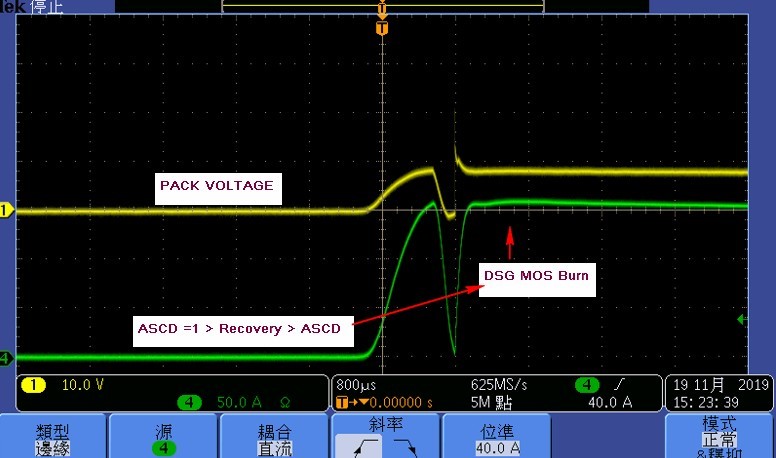Hello there!
I was doing short circuit tests and came across a problem. When the MOS goes back to normal mode, since P+ & P- remain in short circuit state, DSG MOSFET burns out. Also, as far as I know, ASCD is fine. I want to ask that is there a way to make bq40z80 stop from going into recovery mode and only recover when charging(like CUV_RECOV_CHG).
Thanks!


